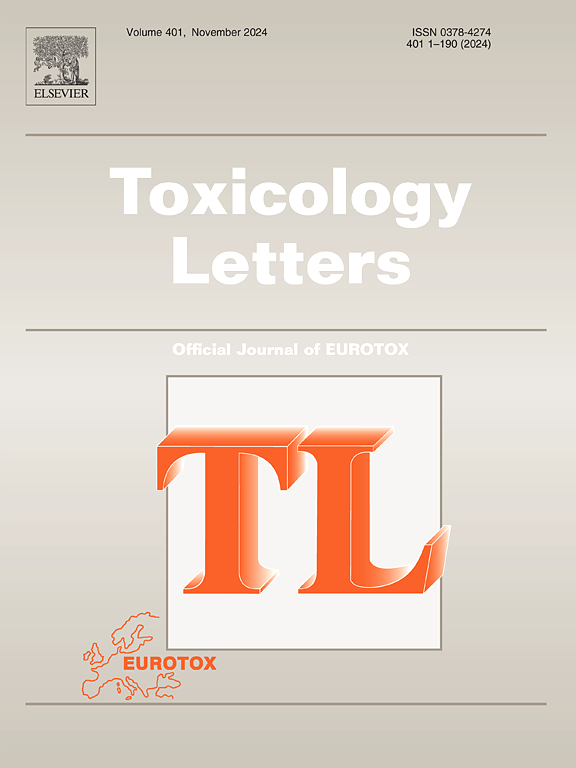皮肤温度和皮内pH值对氢氟酸暴露后经皮氟吸收的影响:人体皮肤的离体扩散细胞研究
IF 2.9
3区 医学
Q2 TOXICOLOGY
引用次数: 0
摘要
由于氟离子的经皮吸收,涉及氢氟酸(HF)的事故可引起全身性中毒。本文研究了皮肤温度和皮内pH值对氟吸收及其动力学的影响。使用静态扩散池模型将人体皮肤暴露于30 % HF中3 分钟。该研究比较了两种不同皮肤温度(24°C和32°C)和两种皮内pH值(6.5和7.2)下的累积氟化物吸收。每个处理和每个供体至少进行三次实验(n = 5),pH和温度实验的持续时间分别为8 h和12 h。结果表明,氟吸收量随着温度的升高而增加,与24℃相比,32℃时的累积穿透量增加了~ 17.8 %。通过皮肤的最大通量在第一个小时内达到,在24°C时降低了~ 54 %。此外,将皮肤酸化至皮内pH值6.5,导致累积氟化物吸收显著增加~ 12.6 %,最大通量增加~ 50.3 %。研究结果表明,通过降低皮肤温度和将皮内pH值缓冲到生理水平,可以减少皮肤意外接触HF后氟化物的吸收。这些结果对现实生活中涉及HF暴露的急救措施具有重要意义。通过冷却控制皮肤温度和添加缓冲剂的皮内pH值可以增强去污策略。本文章由计算机程序翻译,如有差异,请以英文原文为准。
Impact of skin temperature and intradermal pH on transdermal fluoride absorption following hydrofluoric acid exposure: An ex vivo diffusion cell study in human skin
Accidents involving hydrofluoric acid (HF) can cause systemic poisoning due to the transdermal absorption of fluoride ions. The present study investigates the impact of skin temperature and intradermal pH on fluoride absorption and its kinetics. Human skin was exposed to 30 % HF for 3 minutes using a static diffusion cell model. The study compared cumulative fluoride absorption at two different skin temperatures (24°C and 32°C) and two intradermal pH values (6.5 and 7.2). Experiments were performed at least three times per treatment and per donor (n = 5), over a duration of 8 h and 12 h for pH and temperature experiments, respectively. Results showed that fluoride absorption increased with temperature, with a ∼17.8 % increase in cumulative penetration at 32°C compared to 24°C. The maximum flux rate through the skin was reached within the first hour and was ∼54 % lower at 24°C. Additionally, acidifying the skin to an intradermal pH of 6.5 led to a significant increase in cumulative fluoride absorption by ∼12.6 % and a ∼50.3 % increase in the maximum flux rate. The findings suggest that reducing fluoride absorption after accidental skin contact with HF may be achieved by lowering skin temperature and buffering intradermal pH to a physiological level. These results have important implications for first-aid measures in real-life scenarios involving HF exposure. Controlling skin temperature by cooling and intradermal pH with the addition of buffering agents may enhance decontamination strategies.
求助全文
通过发布文献求助,成功后即可免费获取论文全文。
去求助
来源期刊

Toxicology letters
医学-毒理学
CiteScore
7.10
自引率
2.90%
发文量
897
审稿时长
33 days
期刊介绍:
An international journal for the rapid publication of novel reports on a range of aspects of toxicology, especially mechanisms of toxicity.
 求助内容:
求助内容: 应助结果提醒方式:
应助结果提醒方式:


